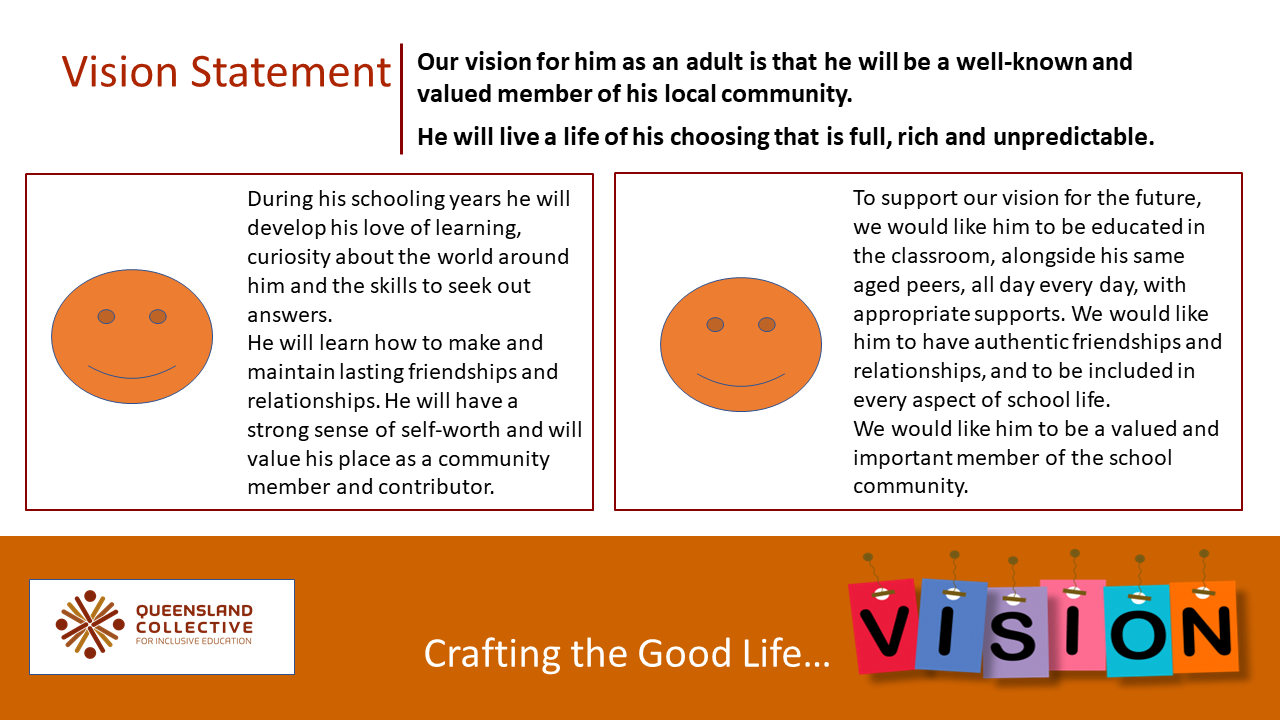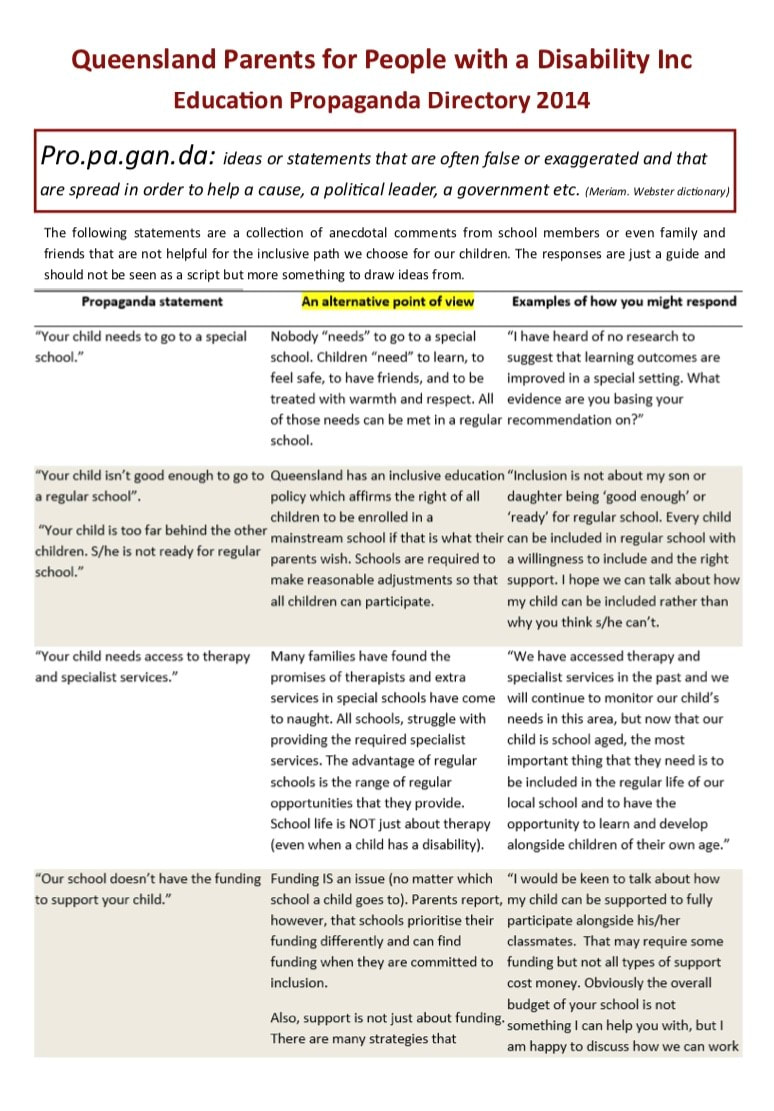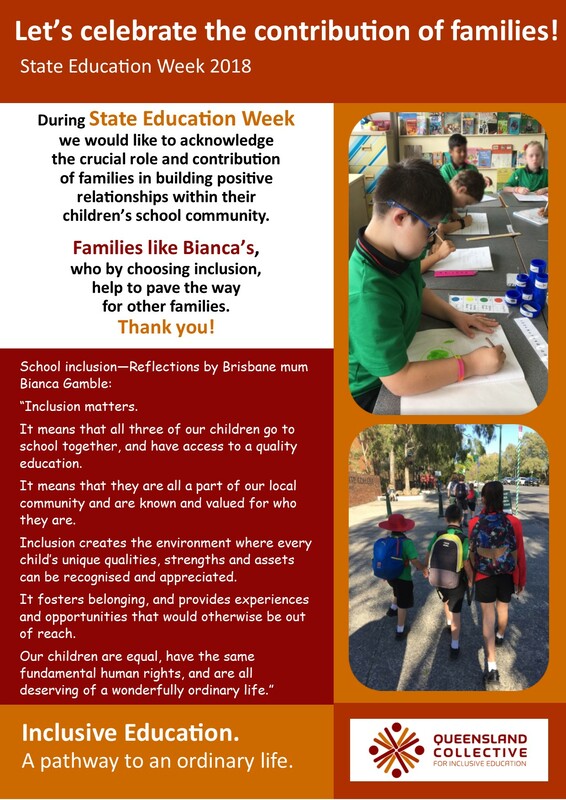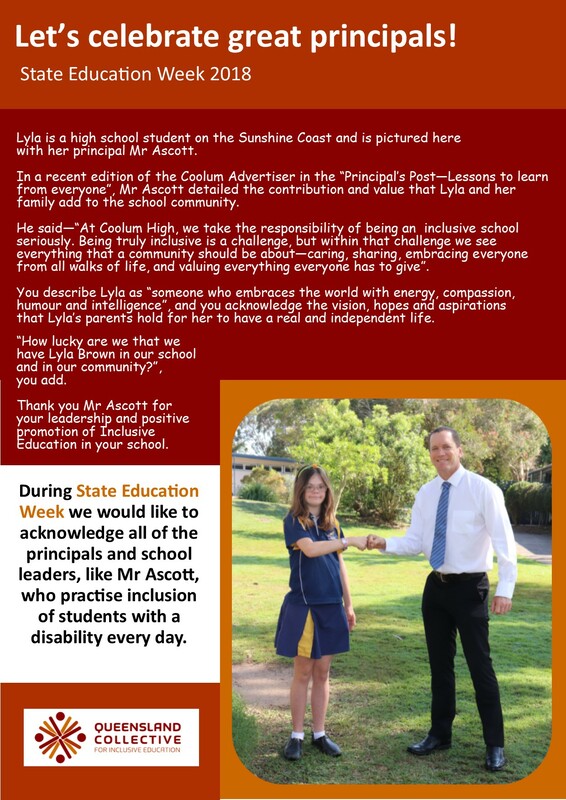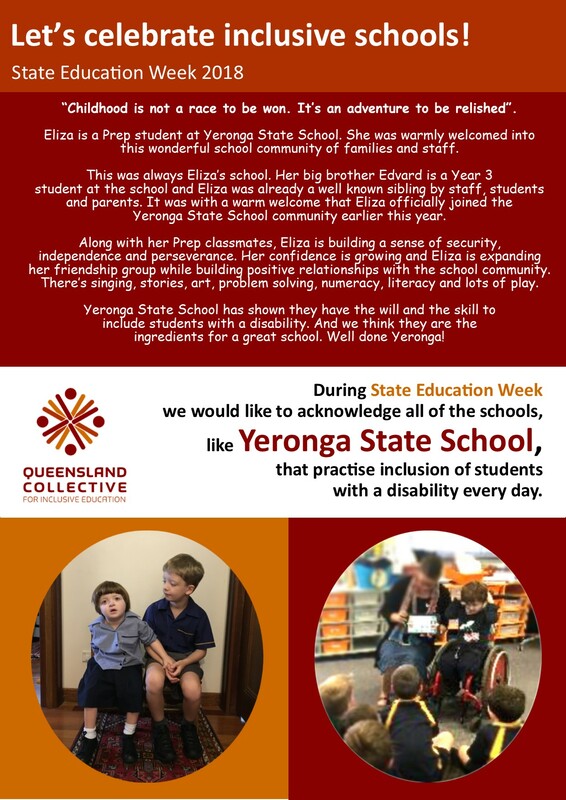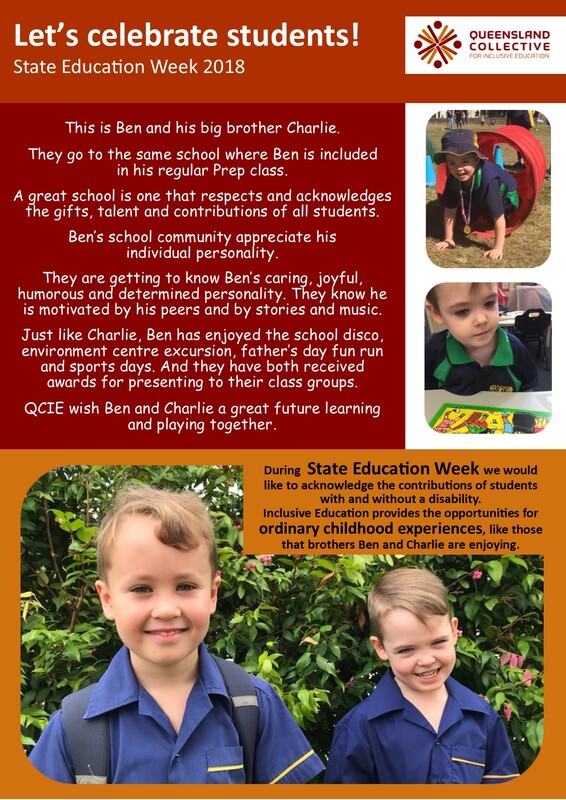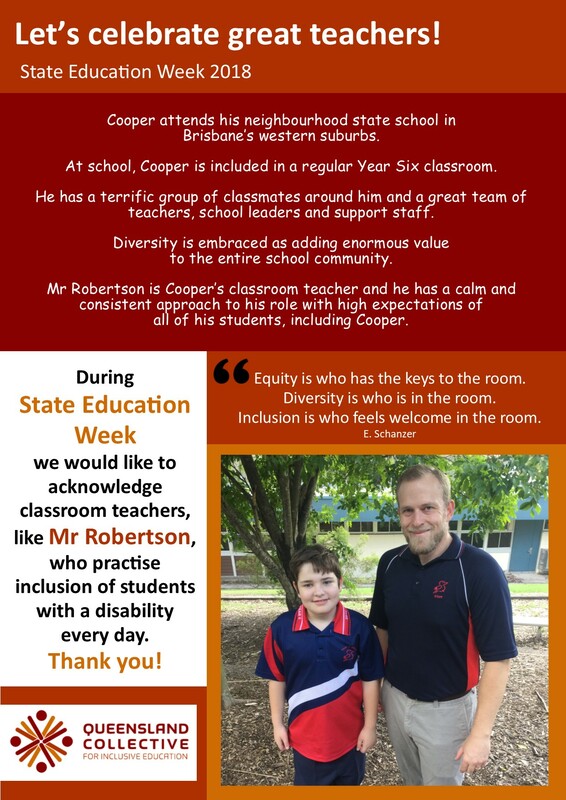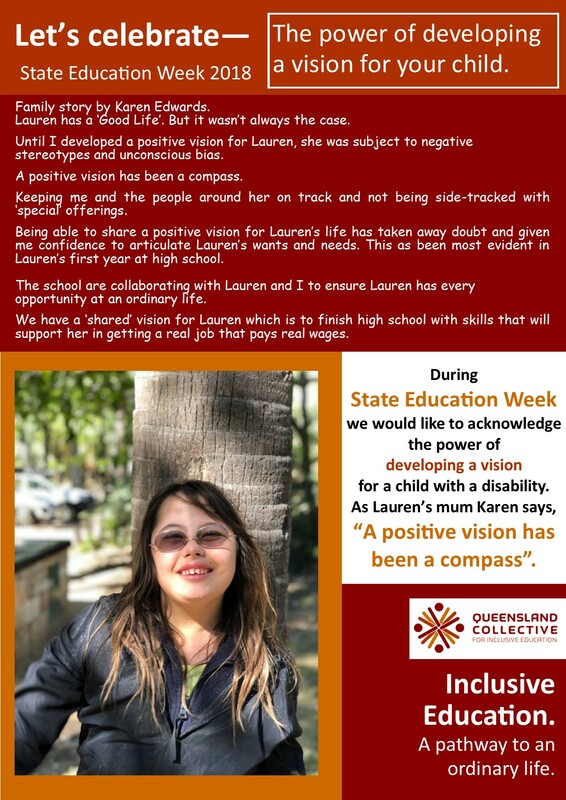Having a vision for your child
From Queensland Department of Education's 'Every student with disability succeeding Parent and community engagement' Fact Sheet
Additional ideas for working with parents of students with disability, including but not limited to:
Additional ideas for working with parents of students with disability, including but not limited to:
- Be open to hearing and understanding parents’ aspirations and concerns for their child.
- Develop goals in partnership with parents – reflecting high expectations built on the student’s strengths and addressing areas for improvement.
- Provide regular updates to parents on how their child is progressing, giving information about the supports being provided and their child’s strengths and areas for improvement.
- Provide opportunities for parents to give updates on the student’s wellbeing and how this may impact on their learning.
- Communicate any concerns to parents in a timely and respectful way, and in person wherever possible.
- Promote high expectations of all students with disability and encourage parents to be involved in school activities.
- Ensure staff are aware of, and supported to meet, their obligations to provide reasonable educational adjustments.
- Implement differentiated teaching practices as part of everyday good practice.
- Involve parents in designing and promoting learning experiences, school events and activities that enable students with disability to access and participate on the same basis as other students.
See our full Propaganda Responses Guide here.
Thank you to Qld Parents for People with a Disability (QPPD) Inc for permission to adopt and share this guide. QPPD 1990 - 2017.
Thank you to Qld Parents for People with a Disability (QPPD) Inc for permission to adopt and share this guide. QPPD 1990 - 2017.
FAQs
|
Should student peers be 'educated' on disability?
Based on advice from families, we suggest that it might assist to focus on respect for all diversity - after all that is what is missing - "respect" - not necessarily understanding of a particular diagnosis. Sometimes, focusing on a label can end up reinforcing stereotypes rather than increasing understanding. Any information about a student and how the student might need support would be done as needed and one on one. More generally the things which are likely to work are helping the student to be seen in valued roles, known for positive qualities and common interests with other students - and possibly being intentionally grouped/linked with capable, well-respected and empathetic students. There is enormous protection in being linked with students who are the most valued. This can take some work - particularly if there are some classroom dynamics which are already driving unkind behaviour.
|

